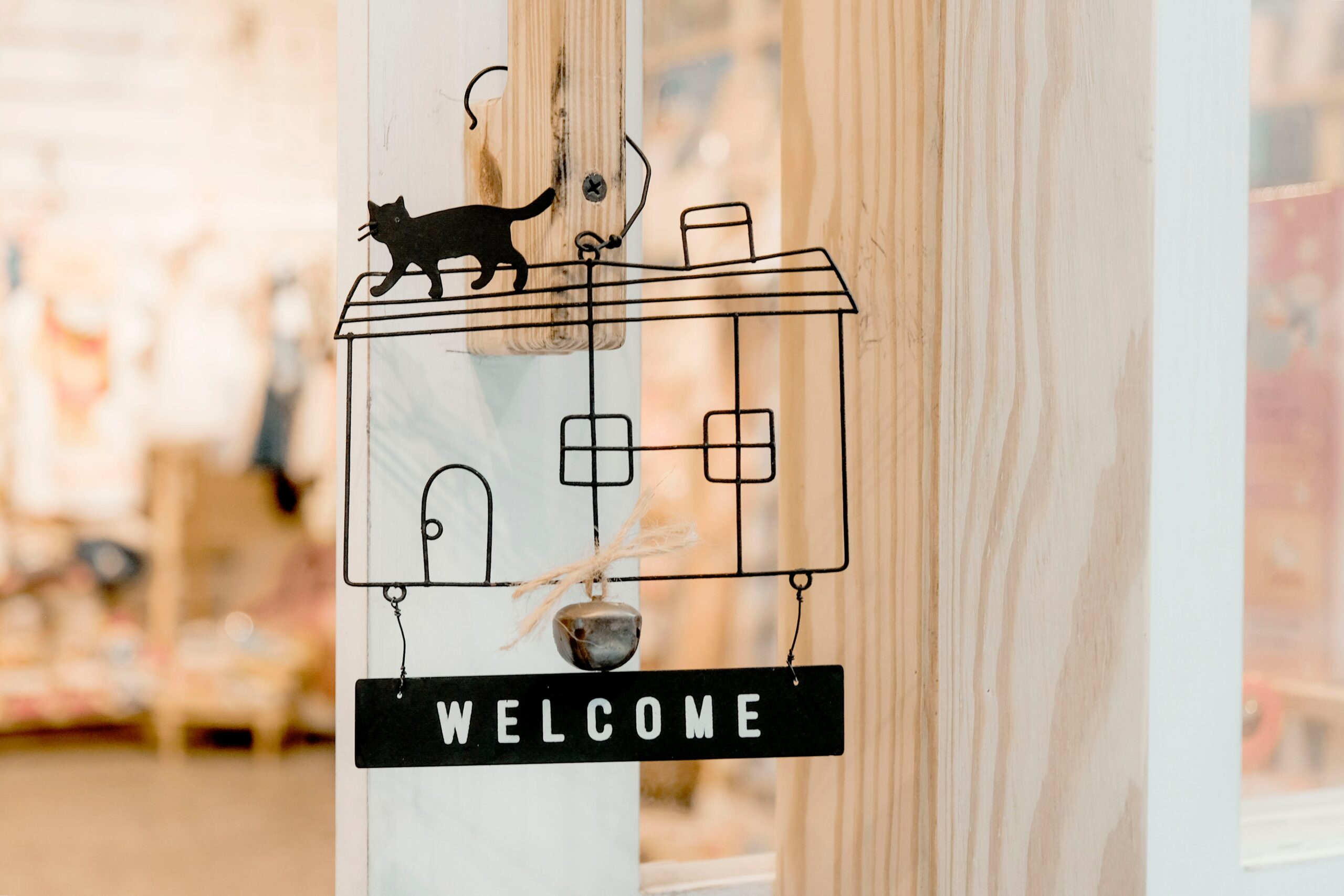Interior signs play a pivotal role in transforming spaces into cohesive and functional environments. Beyond their practical function, these signs contribute significantly to the overall aesthetic appeal of a space, creating a harmonious and visually pleasing atmosphere.
Creating a Welcoming Environment With Interior Signage
A well-executed signage system not only provides essential information but also contributes to the creation of a welcoming and inclusive environment.
- Effective Wayfinding and Navigation: A well-thought-out wayfinding system utilizes clear and concise signage to assist people in navigating complex environments, reducing confusion and frustration.
- Reinforcing Brand Identity of Interior Signs: From logos to color schemes and typography, interior signage provides a tangible representation of a brand’s personality and values.
Understanding the Basics
To embark on a comprehensive exploration of interior signs, it is crucial to first understand the basics that form the foundation of effective signage systems.
Types of Interior Signs
In the realm of interior signage, various types serve distinct purposes, each contributing to the overall functionality and aesthetics of a space. This includes:
- Informational Signs: Whether presenting important guidelines, rules, or general information, these signs are designed to be clear, concise, and easily comprehensible.
- Directional Signs: These signs strategically guide individuals from one location to another, ensuring a smooth and efficient flow of traffic within a space.
- Identification Signs: Whether used in offices, hospitals, or public buildings, these signs contribute to spatial organization and facilitate ease of navigation.
- Regulatory Signs: These signs communicate specific rules, restrictions, or safety guidelines, ensuring that occupants adhere to established norms. They help in maintaining a safe and orderly environment, particularly in public spaces and commercial establishments.
- ADA Compliant Signs: ADA compliant signs adhere to the guidelines set forth by the Americans with Disabilities Act, featuring specific design elements to facilitate easy comprehension and navigation for everyone, regardless of physical abilities.
Materials and Design Elements for Custom Interior Signs
The choice of materials and design elements significantly influences the visual appeal and durability of interior signs.
- Choosing the Right Materials: Different environments and purposes may necessitate specific materials, and factors such as durability, cost, and aesthetic considerations come into play.
- Typography and Font Selection: The choice of fonts influences readability, tone, and overall visual harmony. It’s important to choose a text and font that not only is in line with your brand but tells the story of it, as well.
- Color Psychology in Signage: Color plays a significant role in influencing human emotions and perceptions. In signage, color choices can evoke specific feelings, convey meanings, and enhance visual impact.
- Incorporating Brand Elements: Incorporating brand elements, such as logos, colors, and visual motifs, into interior signs reinforces brand recognition and establishes a cohesive visual language.
Planning and Interior Sign Placement
From entryways to high-traffic zones and specific functional areas, each placement decision contributes to the overall effectiveness of the signage system, enhancing user experience and ensuring regulatory compliance.
Strategic Sign Placement
The strategic positioning of signs contributes to efficient wayfinding, reinforces brand presence, and ensures that essential information reaches the intended audience.
- Entryways and Exits: Clear and welcoming signs at entryways set the tone for the visitor’s experience, conveying essential information about the establishment.
- High-Traffic Areas: Whether in retail settings, educational institutions, or healthcare facilities, signs strategically positioned in high-traffic areas facilitate navigation and convey pertinent information efficiently.
- Reception and Waiting Areas: The reception and waiting areas serve as focal points within a space, making them ideal locations for strategic sign placement. They can provide visitors with pertinent information, such as directions, facility guidelines, or promotional content.
- Restrooms and Amenities: Proper sign placement in these areas not only aids in wayfinding but also communicates important information about facilities, safety protocols, and accessibility features.
- Compliance and Regulations: Understanding and adhering to these guidelines not only ensures legal compliance but also contributes to the safety and accessibility of a space.
- ADA Guidelines for Interior Signs: Adhering to the Americans with Disabilities Act (ADA) guidelines is imperative for creating inclusive and accessible interior environments.
- Local Building Codes: Local building codes vary, and compliance is essential for obtaining necessary permits and ensuring the safety and functionality of a space.
- Safety and Emergency Signage Requirements: In emergencies, clear and visible signage is crucial for guiding individuals to safety and conveying essential information. It enhances overall preparedness and response in emergency situations.
Designing Effective Wayfinding Systems
Creating a seamless and intuitive wayfinding system within a space is a critical aspect of interior signage design.
Creating Cohesive Wayfinding Systems
From establishing a clear hierarchy to incorporating cutting-edge technology, these considerations contribute to a cohesive and user-friendly experience.
- Clear Hierarchy and Structure: By implementing a well-defined hierarchy, signs can convey information in a logical and easily digestible manner, facilitating smooth navigation within a space.
- Consistent Iconography: By maintaining consistency in iconography across different signs, users can easily interpret and follow the visual language of the wayfinding system.
- Utilizing Floor Plans and Maps: Incorporating floor plans and maps into wayfinding systems provides users with a visual representation of the space, aiding in orientation and navigation.
- Digital Signage Solutions: Digital displays allow for real-time updates, dynamic content, and interactive features.
- Interactive Touchscreen Displays: These displays empower users to customize their navigation experience, explore points of interest, and access additional information.
- Augmented Reality for Wayfinding: AR overlays digital information onto the physical environment, offering users a seamless blend of the virtual and real worlds.
Maintenance of Interior Signs and Upkeep
Ensuring the longevity and continued effectiveness of interior signage requires a systematic approach to maintenance and upkeep.
Long-Term Care for Interior Signs
By implementing proactive measures, businesses and organizations can preserve the quality and functionality of their signage investments.
- Cleaning and Maintenance Tips: Regular cleaning is essential to maintain the visual appeal and legibility of interior signs. This involves removing dust, dirt, and other accumulations that can obscure the messaging. Different materials may require specific cleaning methods to prevent damage.
- Updating and Refreshing Signage: Over time, changes in branding, information, or design trends may necessitate updates to interior signage. Whether it’s refreshing the look of existing signs or incorporating new information, this process requires a thoughtful approach
- Addressing Wear and Tear: Scratches, fading, or physical damage can compromise the effectiveness of the signage. Whether through repairs, replacements, or protective measures, proactive management ensures signs continue to serve their purpose effectively.
The Power of Well-Designed Interior Signs
It is clear that signage is not merely functional; it is a powerful tool that influences visitor experiences, fosters long-term benefits for businesses, and even sparks creativity and innovation within a space.
Impact on Visitor Experience
Navigating through a space with clear and intuitive wayfinding systems, encountering welcoming and informative signs at entry points, and experiencing the seamless integration of brand elements all contribute to a positive and memorable impression.
Long-Term Benefits for Businesses
Establishing a cohesive and visually appealing brand presence through signage contributes to brand recognition and recall. Clear directional signage minimizes confusion, improving operational efficiency and customer satisfaction.
Inspiring Creativity and Innovation
As businesses and designers continue to recognize the significance of thoughtful signage, the impact on the overall design and functionality of interior spaces will undoubtedly continue to evolve and inspire – that is why working with a sign company is crucial to get the signage solution your business truly needs.



